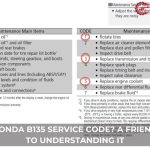We’ve all experienced that moment when a BMW glides past and heads turn in unison. There’s something undeniably magnetic about BMW’s design philosophy that transcends mere transportation and enters the area of automotive art. From the iconic kidney grille to the precise character lines that flow across every surface these German masterpieces represent decades of refined aesthetic evolution.
BMW’s visual identity isn’t just about looking good – it’s about creating an emotional connection between driver and machine. The brand’s commitment to “sheer driving pleasure” extends far beyond performance into every curve crease and surface detail. Each model carries forward a design DNA that’s instantly recognizable yet constantly evolving.
Whether you’re drawn to the aggressive stance of an M-series or the elegant sophistication of a 7 Series we’ll explore what makes BMW’s aesthetic so compelling and enduringly popular among automotive enthusiasts worldwide.
BMW’s Design Philosophy and Brand Identity
BMW’s design philosophy centers on creating vehicles that embody “sheer driving pleasure” through purposeful aesthetics. The company’s approach combines form and function in ways that distinguish each model while maintaining consistent brand recognition across the entire lineup.
Core Design Principles
Four fundamental principles guide BMW’s aesthetic decisions. Ever-changing proportions create the foundation for every BMW vehicle, establishing the long hood and short rear overhang ratio that defines the brand’s sporty character. Precision craftsmanship ensures each surface flows seamlessly into the next, creating visual harmony throughout the exterior design. Functional beauty integrates performance elements like air intakes and aerodynamic features into the overall aesthetic composition. Emotional connection transforms mechanical components into design elements that resonate with drivers on a personal level.
Iconic Brand Elements
The kidney grille stands as BMW’s most recognizable design signature, evolving from the 1933 BMW 303 into modern interpretations across today’s model range. BMW designers adapt this element’s size and treatment to match each vehicle’s character while preserving its distinctive shape and positioning.
Hofmeister kink represents another defining BMW characteristic, appearing as the upward curve in the C-pillar glass area. This subtle detail adds visual tension to the side profile and creates a connection point between the greenhouse and body that’s uniquely BMW.
Character lines flow across BMW surfaces to create light and shadow interplay that changes throughout the day. These precision-cut creases guide the eye around the vehicle’s form while emphasizing the muscular stance that defines BMW’s athletic identity.
Evolution of Brand Identity
BMW’s aesthetic language has adapted through decades while maintaining core identity elements. The brand introduced flame surfacing in the early 2000s, creating more sculptural body forms that emphasized three-dimensional depth. Recent design generations embrace cleaner surfaces with fewer character lines, focusing attention on proportion and stance rather than surface complexity.
Modern BMW design language incorporates digital elements into traditional forms, with LED lighting signatures becoming integral to brand recognition. The adaptive lighting systems create distinctive patterns that identify BMW vehicles from important distances, extending the brand’s visual impact beyond daylight hours.
Iconic BMW Aesthetic Elements
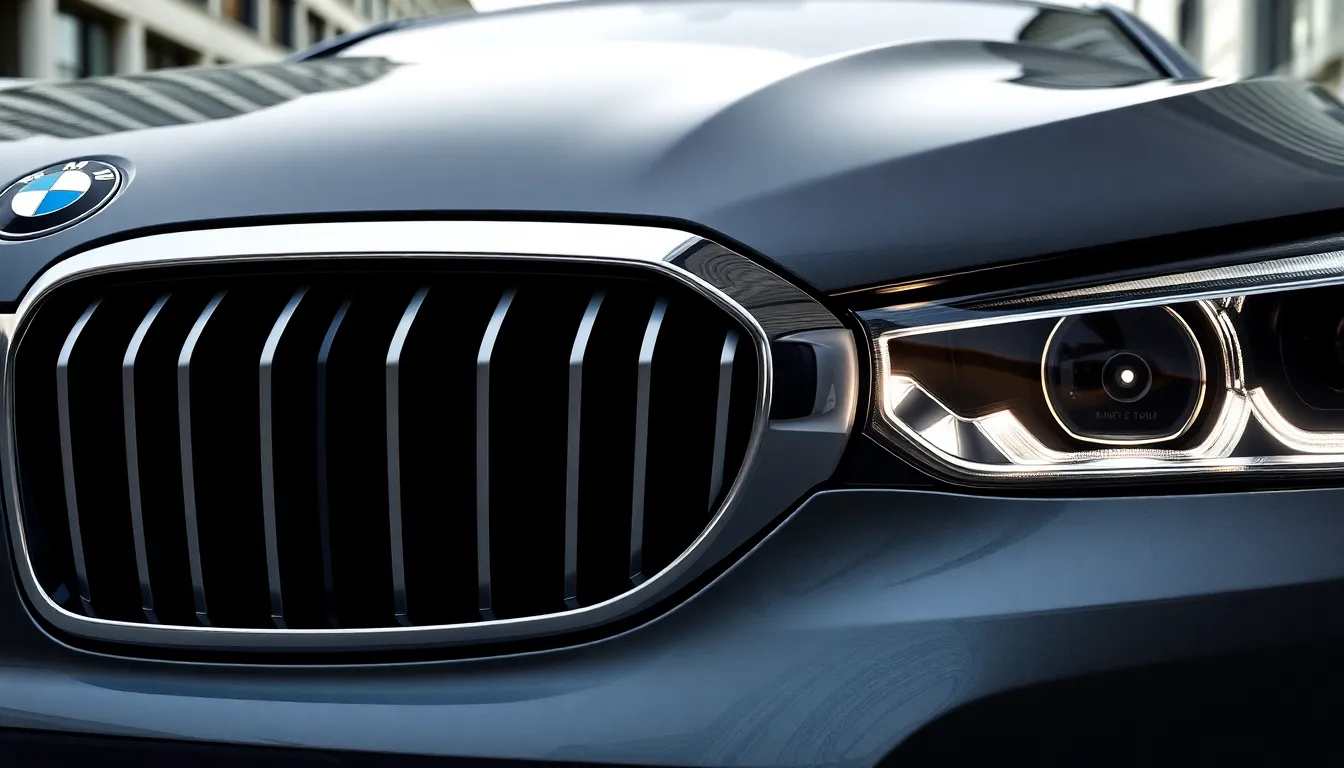
Iconic BMW aesthetic elements define the brand’s visual identity across decades of automotive excellence. These distinctive design features create instant recognition and emotional connection between driver and vehicle.
The Kidney Grille Evolution
The kidney grille represents BMW’s most recognizable aesthetic signature since its debut on the 1933 BMW 303. Originally separated twin grilles measured 4 inches wide and featured chrome surrounds with horizontal bars. Modern iterations stretch up to 50% larger than previous generations and incorporate active air flaps for improved aerodynamics.
Contemporary BMW models showcase grille variations across different series:
- 3 Series: Classic proportional kidney design with black mesh inserts
- 7 Series: Enlarged vertical grilles measuring 40% taller than standard
- X7: Supersized grilles spanning 9.5 inches in height
- i4 Electric: Closed grille panels with illuminated BMW emblem
Luxury models feature crystal-cut detailing while M performance variants display aggressive mesh patterns. The grille connects to BMW’s thermal management systems and houses advanced radar sensors for driver assistance technologies.
Angel Eyes and LED Lighting Design
Angel Eyes lighting debuted on the 2001 BMW E65 7 Series as circular daytime running lights surrounding the headlamp assemblies. These distinctive halos create a 360-degree light signature visible from 500 feet away during daylight hours. LED technology replaced traditional CCFL tubes in 2008 for enhanced durability and energy efficiency.
Modern BMW lighting systems incorporate multiple technologies:
- Adaptive LED headlights: 12 individually controlled segments per headlight
- Laserlight technology: Projects illumination up to 2000 feet ahead
- Welcome carpet: Ground projection displays BMW logo beneath door handles
- Ambient interior lighting: 64-color customizable cabin illumination
Signature lighting extends to taillights with L-shaped LED arrays and sequential turn signals. BMW’s Iconic Glow kidney grille illumination creates a distinctive nighttime presence across electric vehicle models.
Hofmeister Kink Window Detail
The Hofmeister kink appears as a distinctive forward bend in the rear pillar window graphic at the base of the C-pillar. Wilhelm Hofmeister introduced this design element on the 1961 BMW 1500 sedan to create visual tension and athletic proportions. The kink angles forward at approximately 15 degrees from the vertical pillar line.
This architectural detail serves multiple aesthetic functions:
- Visual weight: Reduces apparent height of rear passenger compartment
- Athletic stance: Creates forward motion appearance when stationary
- Brand consistency: Appears across all BMW vehicle segments
- Pillar integration: Disguises structural elements within glass area
Contemporary BMW models feature evolved interpretations including illuminated kink elements on electric vehicles and integrated charging port covers. The detail remains present on SUV models even though taller proportions and appears subtly modified on coupe variants to maintain sporty profiles.
Body Lines and Sculptural Design
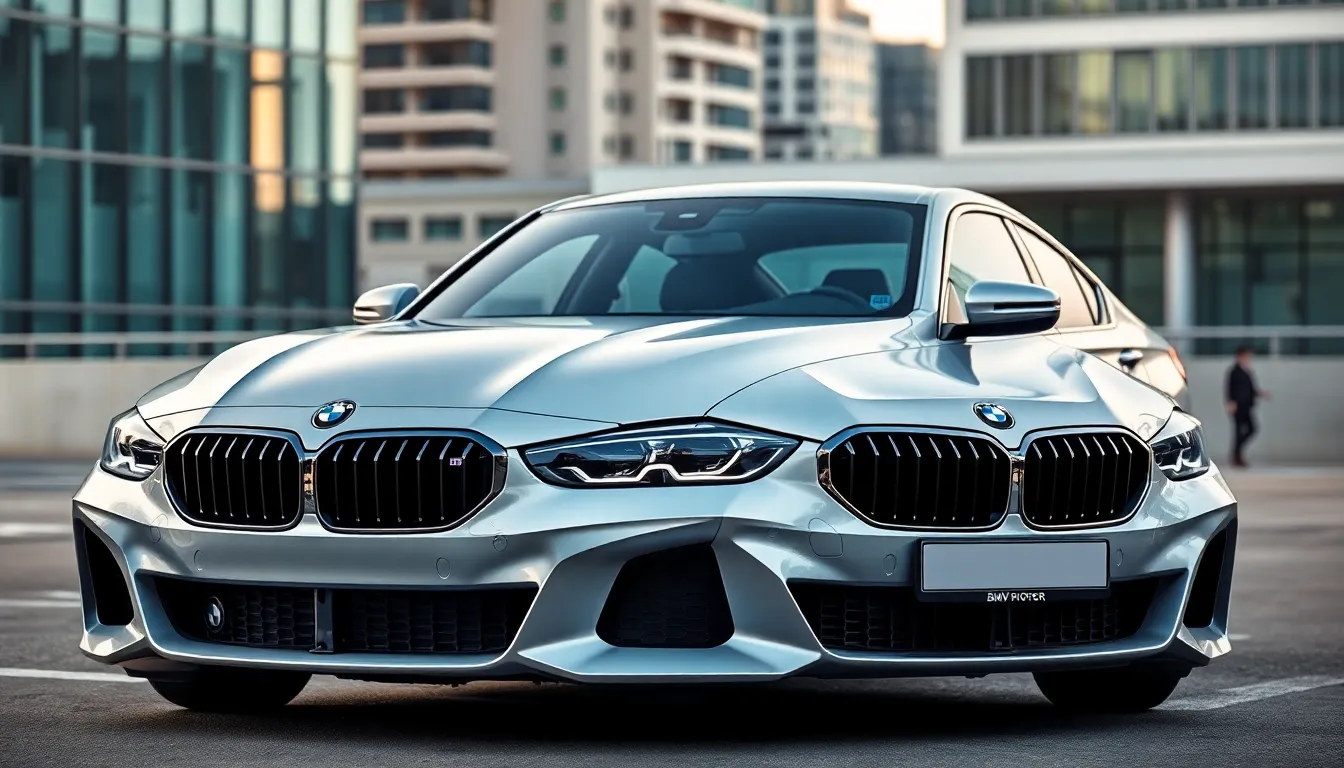
BMW’s sculptural approach transforms metal into artistic expression through carefully crafted body lines that define each vehicle’s character. These design elements create visual tension and harmony across every surface.
Ever-changing Proportions and Stance
Ever-changing proportions establish BMW’s commanding road presence through mathematically precise ratios that enhance visual impact. We observe how the brand employs exact dimensional relationships: the wheelbase to overhang ratio creates an athletic stance, while the greenhouse to body ratio maintains elegant proportions across model lines.
Key proportion elements include:
- Long hood proportions – Extended front sections emphasize rear wheel drive heritage
- Short overhangs – Minimized front and rear extensions enhance sporty appearance
- Wide track positioning – Increased wheel spacing improves stability perception
- Low center of gravity – Reduced height creates performance oriented silhouette
- Muscular shoulder lines – Prominent rear quarter panels add power impression
BMW’s stance engineering positions wheels at optimal visual points, creating tension between surfaces that suggests forward motion even when stationary. The brand’s designers use negative space around wheel arches to amplify the athletic posture, while maintaining luxury proportions that distinguish premium positioning.
Surface Treatments and Character Lines
Surface treatments across BMW models employ flame surfacing techniques that create depth through subtle convex and concave transitions. Character lines serve as sculptural elements that guide light across body panels, establishing the brand’s three dimensional aesthetic language.
Primary surface design approaches:
- Flame surfacing – Convex surfaces flow into concave sections for ever-changing light play
- Tension lines – Sharp creases create visual energy between body panels
- Surface interruptions – Strategic breaks prevent monotonous flat expanses
- Light catching edges – Precisely angled transitions enhance premium appearance
- Continuous flow – Unbroken lines connect front to rear design elements
Contemporary BMW models feature character lines that originate from functional elements like door handles or air vents, extending across entire vehicle sides to create cohesive visual narratives. These lines maintain consistent angles and depths across different model sizes, ensuring brand recognition while adapting to each vehicle’s exact proportions and functional requirements.
Interior Aesthetic Excellence
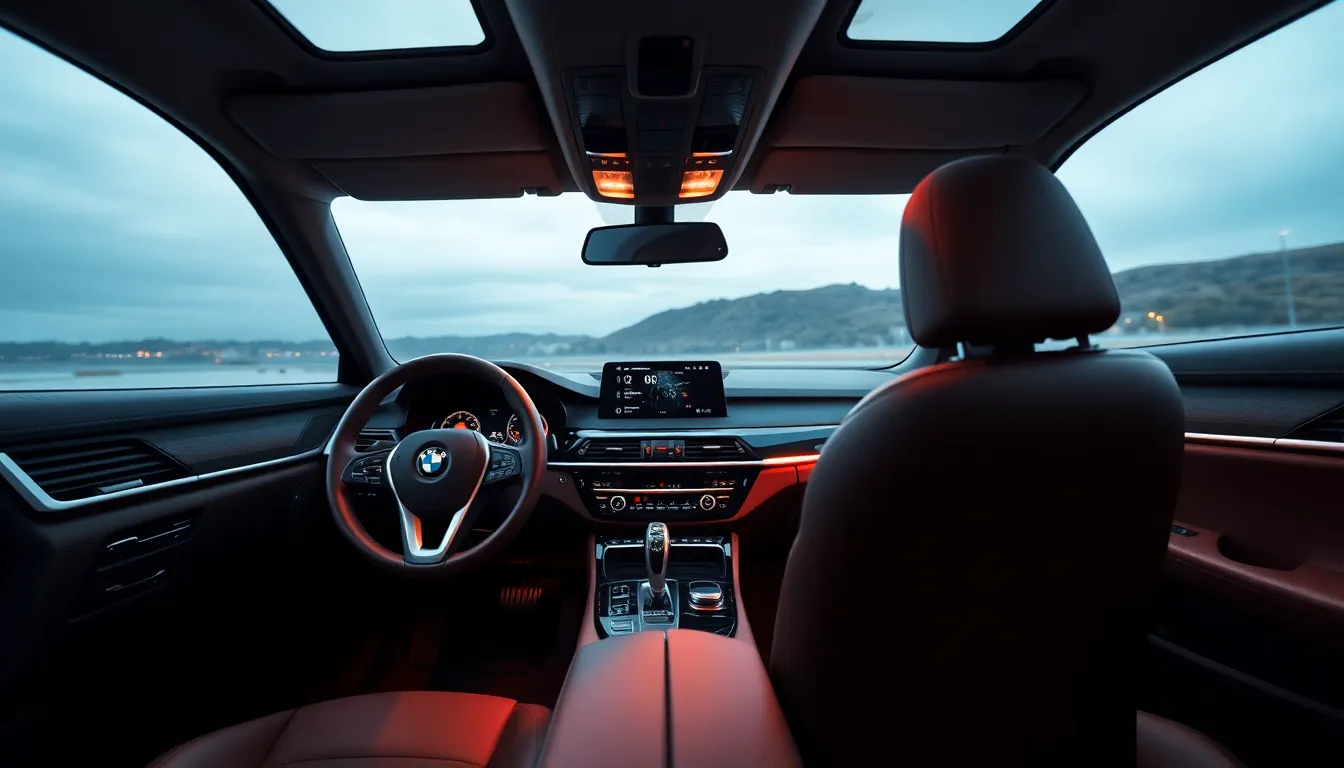
BMW’s interior aesthetic excellence transforms automotive cabins into sophisticated environments where every surface communicates luxury and precision. The brand’s commitment to creating emotionally resonant spaces extends beyond mere visual appeal to cover tactile experiences and functional artistry.
Cabin Design Language
BMW’s cabin design language centers on driver-focused architecture that creates intuitive spatial relationships between occupant and machine. The signature cockpit orientation positions primary controls within natural reach while maintaining clean geometric lines throughout the dashboard layout.
Contemporary BMW interiors feature horizontal design elements that emphasize width and create a sense of spaciousness within the cabin. The floating infotainment display serves as a central focal point while integrating seamlessly with the overall design narrative. Ambient lighting systems illuminate key surfaces and create depth through carefully orchestrated light placement.
The brand’s latest models incorporate digital elements that complement rather than dominate the physical design language. iDrive controllers maintain tactile feedback while curved displays follow the natural eye line for optimal visibility. Air vents integrate into the dashboard architecture as sculptural elements rather than functional afterthoughts.
Premium Materials and Craftsmanship
Premium materials define BMW’s interior aesthetic through carefully selected combinations of leather, wood, metal, and advanced composites. Nappa leather receives hand-finishing treatments that create distinctive grain patterns across seating surfaces and trim panels. Dakota leather variants offer textured alternatives that maintain luxury appeal while providing enhanced durability.
Wood trim selections include open-pore finishes on oak, walnut, and eucalyptus that preserve natural grain characteristics. Aluminum trim pieces undergo precision machining to achieve mirror-like surfaces or subtle brushed textures depending on model specifications. Carbon fiber elements appear in performance-oriented models as functional decorative accents.
Craftsmanship standards ensure consistent quality across all interior touchpoints through rigorous manufacturing processes. Stitching patterns follow precise geometric layouts that complement the overall design language. Panel gaps maintain tolerances measured in millimeters to create seamless surface transitions. Color coordination systems match materials across multiple production facilities to ensure visual consistency throughout the model range.
Color Palette and Finish Options
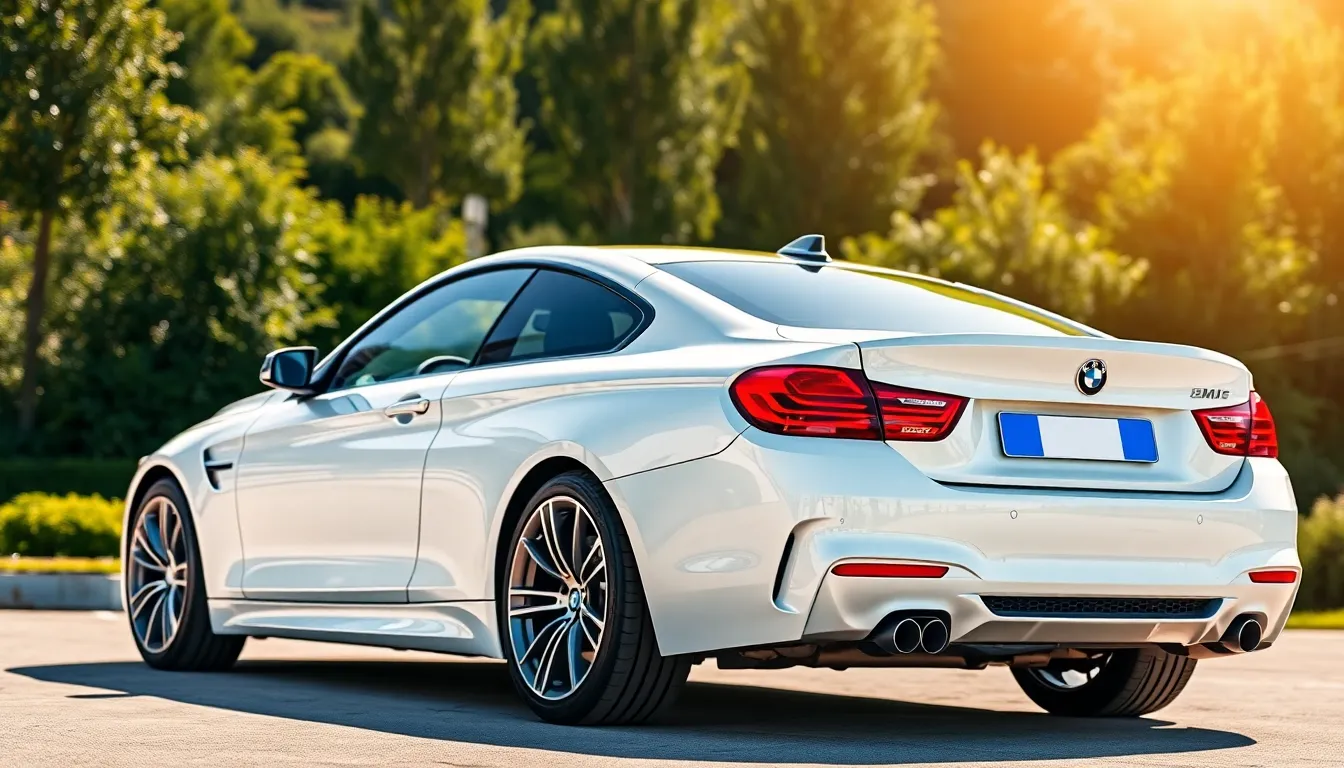
BMW’s color palette reflects decades of meticulous aesthetic development across its entire model lineup. Alpine White remains the signature color that exemplifies BMW’s clean design philosophy, accounting for approximately 35% of all BMW sales globally. Jet Black follows as the second most popular choice, representing the brand’s sophisticated approach to luxury automotive finishes.
Contemporary BMW models offer three distinct finish categories that enhance the brand’s aesthetic appeal. Standard metallic finishes include Storm Bay, Mineral Grey, and Midnight Black, each engineered with specialized metallic particles that create depth and visual movement under varying light conditions. Premium finishes feature Individual colors like Frozen Dark Silver and Tanzanite Blue, utilizing matte coating technologies that eliminate traditional gloss while maintaining color saturation. M Performance models showcase exclusive options such as Fire Orange and Isle of Man Green, specifically formulated to complement the aggressive styling elements of high-performance variants.
| Finish Type | Popular Colors | Models Available | Price Premium |
|---|---|---|---|
| Standard Metallic | Storm Bay, Mineral Grey, Alpine White | All models | $0-595 |
| Premium Individual | Frozen Dark Silver, Tanzanite Blue | 3 Series and above | $1,950-3,400 |
| M Performance | Fire Orange, Isle of Man Green | M models only | $2,950-4,200 |
Specialized coating technologies distinguish BMW’s finish quality from competitors through multi-layer application processes. Base coat systems use primer layers that enhance color vibrancy and provide corrosion resistance for up to 12 years. Clear coat applications incorporate ceramic particles that increase scratch resistance by 40% compared to traditional automotive finishes, maintaining the aesthetic integrity throughout the vehicle’s lifespan.
BMW Individual program extends color customization beyond standard offerings through bespoke paint mixing capabilities. Customers can select from over 90 historical BMW colors, including rare shades from classic models like Chamonix White from the 2002 series and Inka Orange from vintage M models. Custom color matching services replicate exact hues from customer samples, requiring 8-12 weeks for completion and specialized application at BMW’s Dingolfing facility.
Surface texture variations create distinct aesthetic personalities across different model segments. Gloss finishes on luxury models like the 7 Series emphasize elegance through high-reflection surfaces that showcase body line precision. Satin finishes on X models provide subtle texture that reduces maintenance requirements while maintaining premium appearance. Matte surfaces on M models eliminate reflection entirely, creating dramatic visual contrast that emphasizes aggressive body sculpting.
Color psychology influences BMW’s palette development through extensive market research and cultural analysis. European markets favor darker, more conservative tones with metallic finishes representing 78% of sales. North American customers prefer lighter colors and unique Individual options, accounting for 23% higher Individual program participation rates. Asian markets demonstrate strong preference for white finishes, with Alpine White and Mineral White comprising 52% of regional sales.
Model-Specific Aesthetic Highlights
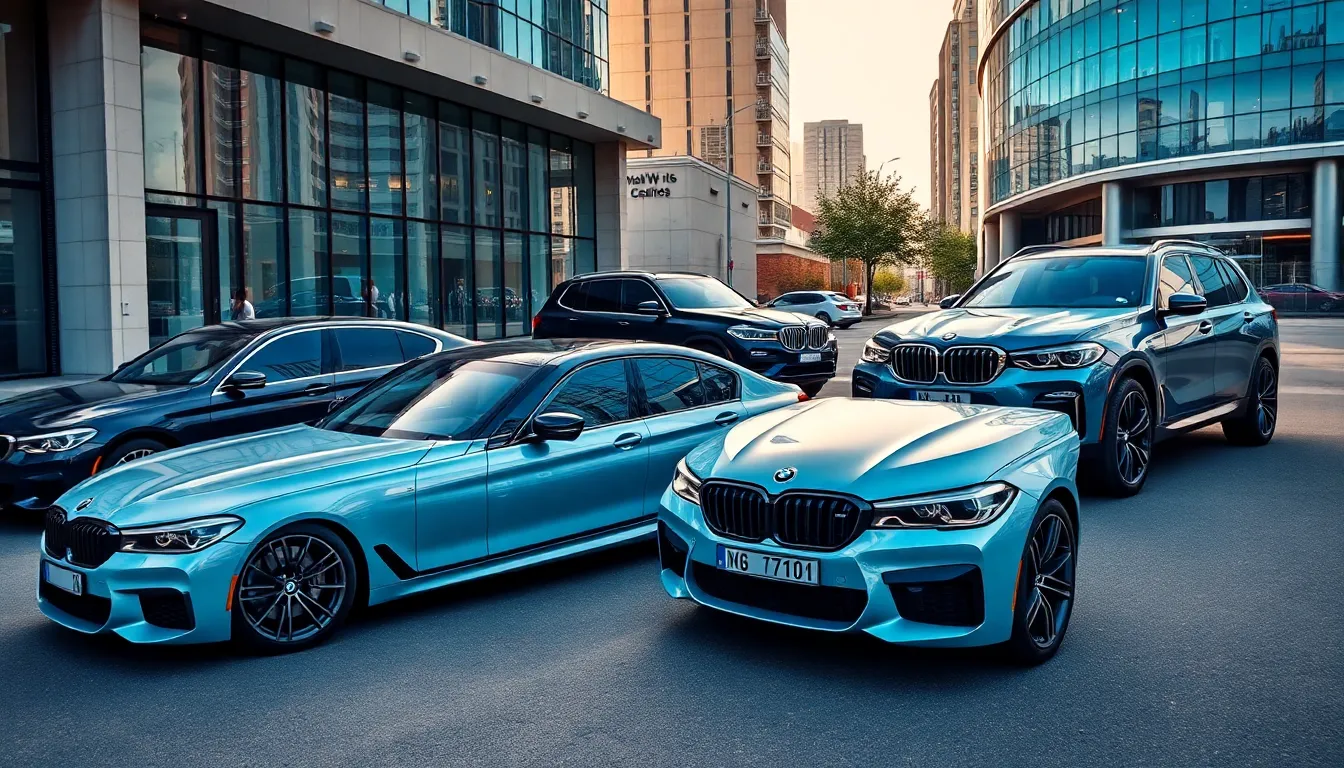
BMW’s diverse model lineup showcases distinctive aesthetic approaches that reflect each vehicle’s intended purpose and target market. Each segment demonstrates unique interpretations of core BMW design principles while maintaining unmistakable brand identity.
Sports Cars and Performance Models
Sports cars and performance models embody BMW’s most aggressive aesthetic interpretation, featuring razor-sharp character lines that emphasize speed and precision. The M2 Competition showcases muscular wheel arches paired with carbon fiber aerodynamic elements, creating a purposeful stance that communicates raw performance capability.
M3 and M4 models incorporate enlarged air intakes alongside distinctive quad exhaust systems, establishing visual dominance through functional design elements. Performance models use exclusive M-exact kidney grille treatments, featuring mesh patterns that differentiate them from standard BMW offerings while maintaining aerodynamic efficiency.
Carbon fiber components appear throughout M Performance vehicles, including roof panels, mirror caps, and front splitters that reduce weight while adding visual drama. M8 Competition models feature active aerodynamic elements that adjust based on driving conditions, combining technological innovation with striking visual presence.
Interior aesthetics emphasize driver engagement through M-exact steering wheels, carbon fiber trim pieces, and distinctive seat designs featuring contrasting stitching patterns. Performance oriented cabins incorporate race inspired elements like shift paddles, sport displays, and lightweight construction materials that reinforce the vehicle’s athletic character.
Luxury Sedans and Executive Vehicles
Luxury sedans and executive vehicles represent BMW’s most refined aesthetic expression, prioritizing elegance and sophistication over aggressive styling cues. The 7 Series flagship demonstrates this approach through elongated proportions and chrome accents that emphasize prestige and executive presence.
Executive models feature larger kidney grilles with vertical slats that convey authority while maintaining aerodynamic functionality. Chrome window surrounds and body side moldings add visual weight to luxury sedans, creating a commanding road presence that appeals to discerning buyers.
5 Series models balance sportiness with luxury through subtle character lines and premium wheel designs that avoid excessive visual aggression. Executive interiors showcase the finest materials including hand-selected wood veneers, premium leather appointments, and crystal glass trim elements that demonstrate exceptional craftsmanship.
Ambient lighting systems in luxury models create sophisticated cabin atmospheres through customizable color schemes and intensity levels. Executive vehicles incorporate comfort focused design elements like massage seats, panoramic sunroofs, and premium audio system integration that enhance the luxury experience.
SUV and Crossover Design Approach
SUV and crossover design approach emphasizes commanding presence through elevated proportions and protective design elements that communicate capability and versatility. The X7 flagship SUV features the largest kidney grille in BMW’s current lineup, establishing immediate visual authority and premium positioning.
Crossover models incorporate black plastic cladding and silver accent pieces that suggest off road capability while maintaining on road sophistication. X3 and X5 models demonstrate this balance through elevated ride height combined with sleek rooflines that preserve aerodynamic efficiency.
BMW’s crossover aesthetic utilizes bold wheel arch designs and protective underbody elements that create visual robustness without compromising luxury appeal. Contemporary SUV models feature panoramic sunroof systems and elevated seating positions that enhance the premium driving experience.
Interior design in BMW crossovers emphasizes versatility through flexible seating arrangements and premium cargo area treatments. SUV cabins incorporate elevated dashboard designs and commanding driving positions while maintaining BMW’s signature driver focused architecture and luxury material quality.
BMW’s Aesthetic Evolution Through the Decades
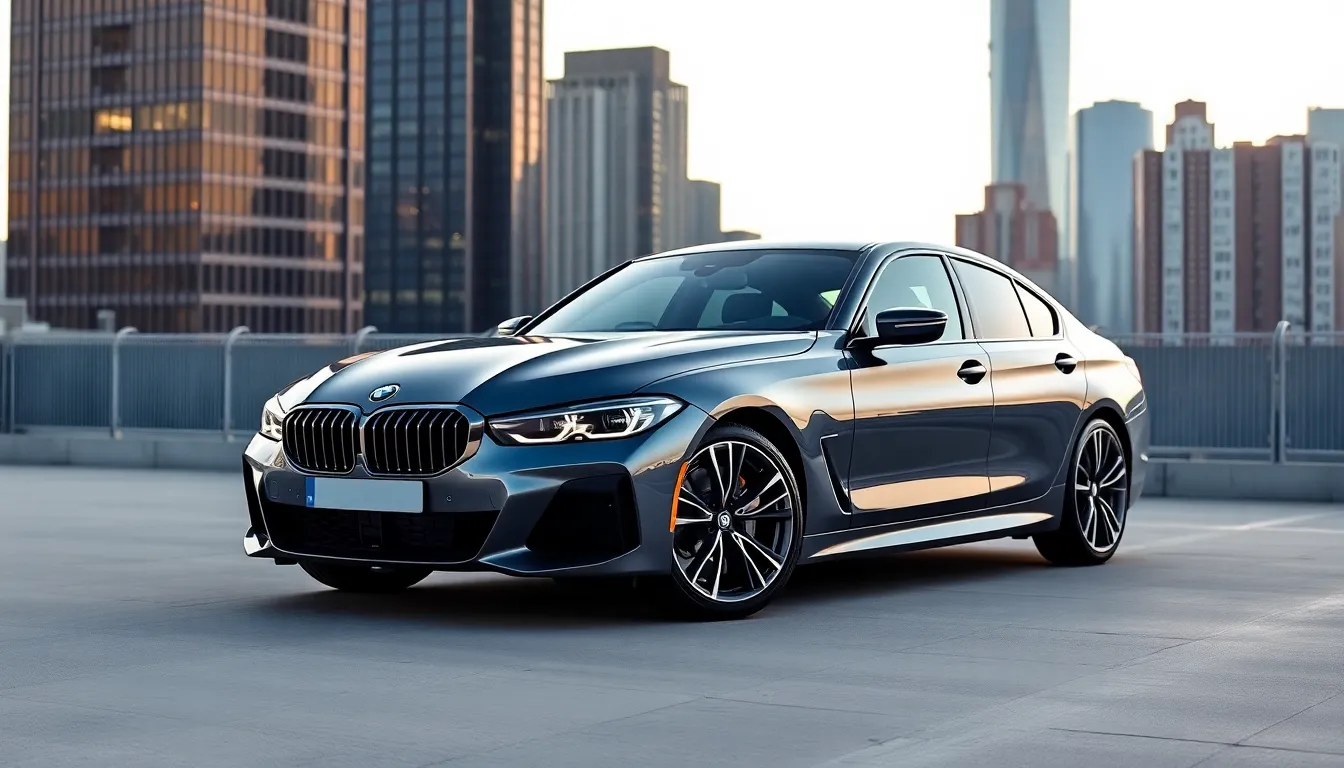
BMW’s visual transformation spans nine decades of continuous design refinement and innovation. Starting in the 1930s, the brand established its foundational aesthetic principles with the BMW 303, introducing the iconic kidney grille that remains central to BMW’s identity today.
The Foundation Years (1930s-1950s)
Classic BMW design emerged during the pre-war era with distinctive proportions and elegant simplicity. BMW 328 roadsters showcased flowing bodywork and aerodynamic efficiency that influenced automotive design for generations. Post-war reconstruction brought refined styling elements through models like the BMW 501, which introduced chrome detailing and sophisticated surface treatments.
The Modern Era Begins (1960s-1970s)
BMW’s contemporary aesthetic language crystallized with the introduction of the Neue Klasse sedans in 1962. Angular design elements replaced curved surfaces as BMW embraced a more geometric approach to automotive styling. Character lines became sharper and more defined while maintaining the brand’s signature proportions.
Performance aesthetics gained prominence through the development of the 2002 series, establishing BMW’s sporting credentials. Wide wheel arches and aggressive stance characteristics emerged as hallmarks of BMW’s design philosophy. Racing heritage influenced production models through functional aerodynamic elements and purposeful surface treatments.
Refined Sophistication (1980s-1990s)
Electronic innovation transformed BMW’s aesthetic approach as digital integration began influencing interior and exterior design. Aerodynamic efficiency became paramount through extensive wind tunnel testing and computational fluid dynamics. Surface complexity increased as manufacturing capabilities advanced, allowing for more intricate character line development.
Luxury segment expansion brought new aesthetic challenges as BMW developed the 7 Series flagship. Premium material integration elevated interior design standards across the entire model range. Color palette sophistication expanded beyond traditional automotive finishes to include specialized metallic and pearl effect options.
Digital Age Transformation (2000s-2010s)
Flame surfacing revolutionized BMW’s design language under Chris Bangle’s creative direction. Complex surface geometries created ever-changing light interaction across body panels. Controversial styling choices sparked industry debate while establishing BMW as an innovative design leader.
iDrive integration marked the beginning of digital aesthetic influence on BMW’s interior design. Touch sensitive surfaces replaced traditional mechanical controls throughout cabin environments. LED lighting technology enabled new signature lighting elements like Angel Eyes corona rings.
Contemporary Excellence (2020s)
Current BMW aesthetic evolution embraces sustainable design principles while maintaining performance oriented styling. Digital display integration reaches new levels of sophistication through curved screen technologies. Adaptive lighting systems create personalized aesthetic experiences for individual drivers.
Electric vehicle development influences contemporary BMW aesthetics through closed grille designs and aerodynamic optimization. Active aerodynamic elements adjust automatically to enhance both efficiency and visual appeal. Sustainable material integration maintains luxury standards while reducing environmental impact.
Cross Model Consistency
Design DNA consistency ensures immediate BMW recognition across diverse model segments. Proportional relationships remain constant whether applied to compact sedans or large SUVs. Surface treatment techniques adapt to different vehicle scales while preserving brand identity elements.
Quality standards maintain uniformity across global manufacturing facilities through precise specifications. Color matching protocols ensure consistent aesthetic delivery regardless of production location. Detail execution receives equal attention whether applied to entry level or flagship models.
Comparison With Competitor Aesthetics
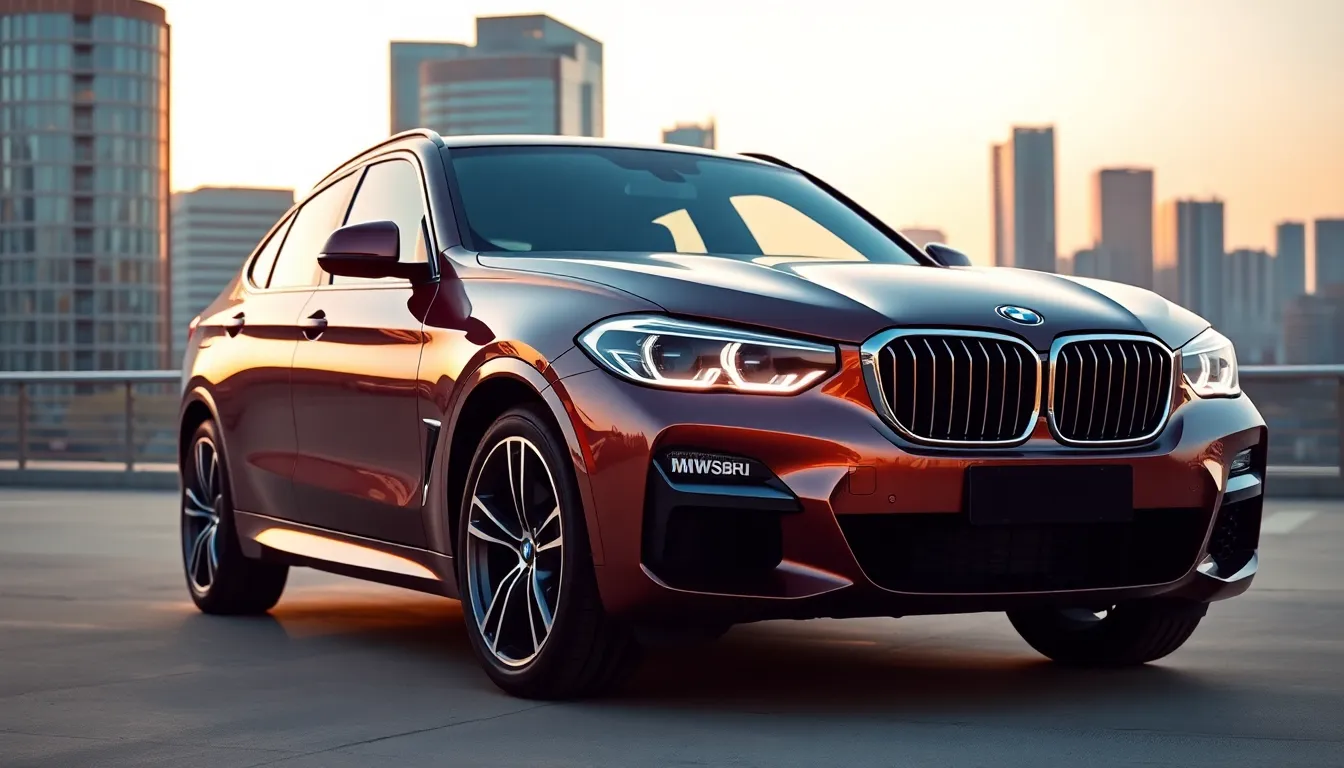
BMW’s aesthetic approach differs markedly from its German rivals Audi and Mercedes-Benz in several fundamental ways. Audi emphasizes geometric precision through its signature Singleframe grille and sharp LED lighting elements, creating angular compositions that prioritize technological sophistication. Mercedes-Benz pursues sensual purity with flowing curves and a prominent three-pointed star, emphasizing elegance and luxury refinement above all else.
Our kidney grille design language creates immediate brand recognition that neither competitor achieves with such consistency. Audi’s Singleframe varies dramatically between models like the compact A3 and the flagship A8, while Mercedes’ grille treatments range from subtle chrome strips to bold diamond patterns without maintaining visual continuity. BMW’s kidney shape remains instantly identifiable across our entire model range, from the compact 2 Series to the imposing X7.
Character line execution reveals distinct philosophical differences between these premium brands. Mercedes employs subtle surface tensions that create understated elegance, particularly evident in their C-Class and S-Class sedans. Audi utilizes sharp creases and defined edges that emphasize precision engineering, most notably in their Quattro-equipped models. We create flowing surfaces with purposeful tension that balances athletic performance with sophisticated refinement.
Interior design philosophies showcase contrasting approaches to luxury and technology integration. Audi’s Virtual Cockpit system dominates their cabin aesthetic with multiple digital displays arranged in geometric patterns. Mercedes’ MBUX interface creates a flowing digital industry that extends across the dashboard in models like the EQS. Our approach centers the driver experience through intuitive control placement and clear sight lines, maintaining physical buttons for essential functions.
Color palette strategies demonstrate different market positioning approaches among German luxury manufacturers. Mercedes offers extensive customization through their designo program, featuring unique paint formulations like Obsidian Black Metallic and Selenite Grey Magno. Audi’s exclusive colors include Nardo Grey and Vegas Yellow, emphasizing sporty performance aesthetics. Our Individual program provides bespoke options while maintaining signature colors like Storm Bay and Mineral Grey Metallic that reinforce brand identity.
Performance model differentiation reveals varying design philosophies for high-performance variants. AMG models from Mercedes feature aggressive front splitters and quad exhaust systems that emphasize raw power. Audi’s RS lineup incorporates honeycomb grilles and angular air intakes that highlight technological precision. Our M division creates purposeful aerodynamic elements like functional air breathers and carbon fiber accents that serve both performance and aesthetic functions.
Lighting signature development showcases distinct approaches to brand recognition through illumination. Audi pioneered LED daytime running lights with their distinctive four-ring pattern, creating technological associations. Mercedes developed Multibeam LED headlights with individual LED control for superior road illumination. We established Angel Eyes as our signature lighting element, evolving from traditional CCFL rings to adaptive LED halos that maintain brand continuity while advancing functionality.
Electric vehicle aesthetic adaptation demonstrates different strategies for transitioning to sustainable mobility. Mercedes’ EQS features a closed-off grille with illuminated three-pointed stars, maintaining luxury positioning while signaling electric capability. Audi’s e-tron models retain Singleframe elements with subtle modifications for aerodynamic efficiency. Our electric models like the iX and i4 evolve the kidney grille into a functional intake system, preserving brand recognition while optimizing airflow management.
Regional market preferences influence aesthetic choices differently across these German manufacturers. Mercedes emphasizes chrome accents and formal proportions for Asian markets, while reducing decorative elements for European preferences. Audi adapts lighting signatures and wheel designs based on local regulations and cultural preferences. We maintain consistent design DNA globally while offering region-exact Individual options and package combinations that respect local aesthetic preferences without compromising brand identity.
Future Design Direction and Concept Previews
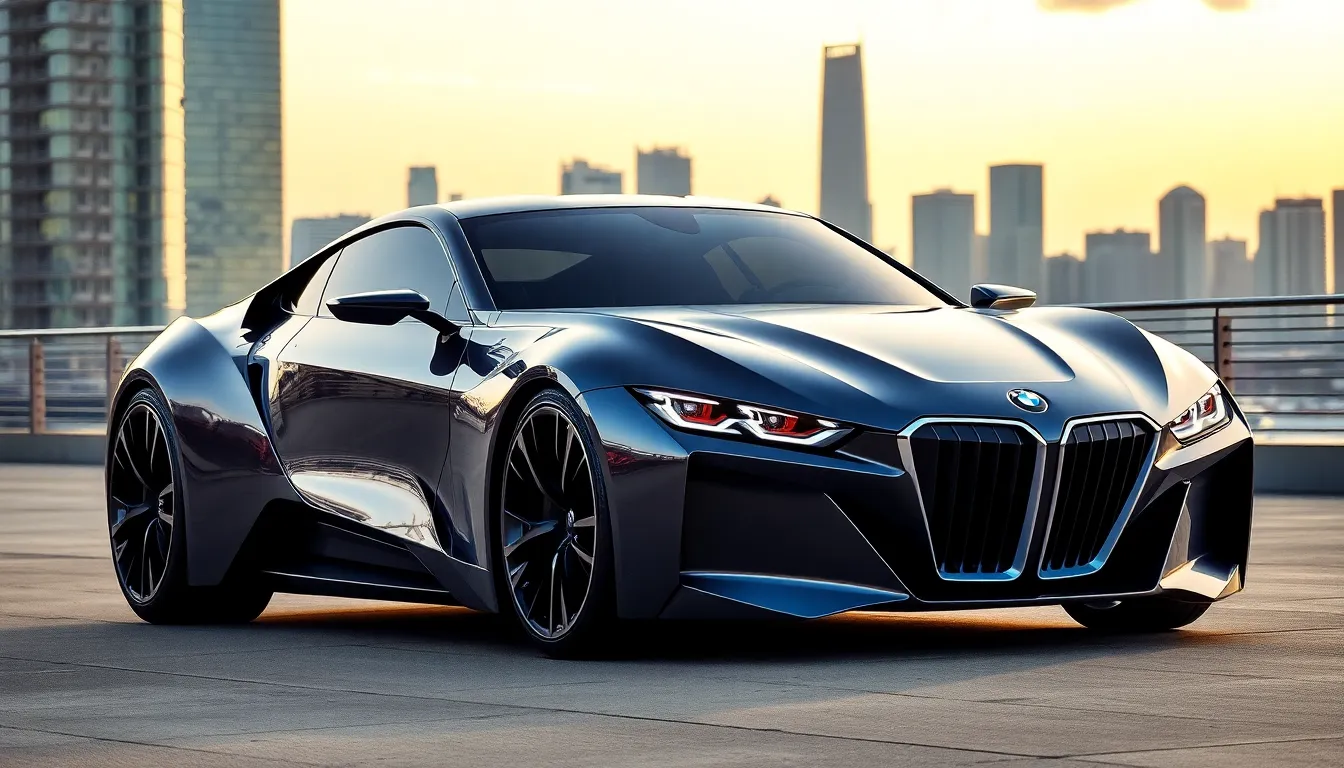
BMW’s vision 2030 showcases revolutionary aesthetic principles that redefine automotive design boundaries. Concept vehicles like the BMW Vision Neue Klasse demonstrate sustainable luxury through minimalist geometric forms and transparent material integration. These prototypes feature simplified kidney grille interpretations that maintain brand recognition while embracing electric mobility requirements.
Digital integration transforms traditional interior environments into immersive technological experiences. The BMW iNext concept introduces augmented reality windshield displays and gesture-controlled ambient lighting systems that respond to driver preferences. Interactive surface materials replace conventional controls, creating seamless touchpoint experiences throughout the cabin space.
Sustainable material innovation drives aesthetic development across future model generations. BMW’s exploration of recycled carbon fiber, bio-based leather alternatives, and renewable wood sources maintains premium quality standards while reducing environmental impact. These materials create distinctive visual textures that enhance the brand’s commitment to responsible luxury manufacturing.
| Concept Feature | Technology | Implementation Timeline |
|---|---|---|
| Transparent Hood Panels | Smart Glass Integration | 2025-2027 |
| Adaptive Kidney Grille | Active Shutter System | 2024-2026 |
| Holographic Displays | AR Windshield Technology | 2027-2030 |
| Bio-Material Interiors | Sustainable Luxury Components | 2025-2028 |
Aerodynamic efficiency influences sculptural design language in unprecedented ways. Future BMW models incorporate active aerodynamic elements that adjust body panel configurations based on driving conditions. These systems maintain the brand’s athletic proportions while optimizing energy consumption through intelligent surface management.
Color-changing paint technologies represent the next frontier in BMW aesthetic customization. Electrochromic coatings allow owners to modify vehicle appearance through smartphone applications, creating personalized expressions of individual style. This innovation preserves the brand’s signature color palette while offering unlimited customization possibilities.
Lighting architecture evolves beyond traditional Angel Eyes into comprehensive communication systems. Adaptive LED matrices create ever-changing patterns that convey vehicle status to other road users and pedestrians. These intelligent systems integrate seamlessly with autonomous driving capabilities while maintaining BMW’s distinctive lighting signature.
Modular design concepts enable personalized aesthetic configurations across model segments. The BMW Vision Next 100 demonstrates groundbreaking interior layouts that adapt to various usage scenarios through reconfigurable seating and surface arrangements. This flexibility maintains the driver-focused philosophy while accommodating future mobility patterns.
Electric vehicle integration preserves BMW’s design DNA through strategic element reinterpretation. Closed-off kidney grilles feature active cooling systems and sensor arrays that maintain functional purpose while supporting new powertrain requirements. Character lines adapt to accommodate battery packaging without compromising the brand’s sculptural aesthetic principles.
Conclusion
BMW’s aesthetic mastery represents far more than visual appeal—it’s a testament to the brand’s unwavering commitment to excellence. We’ve witnessed how every design element serves both form and function while maintaining the emotional connection that defines the BMW experience.
The brand’s ability to evolve while preserving its core identity sets it apart in today’s competitive automotive industry. From the timeless kidney grille to cutting-edge sustainable materials BMW continues pushing boundaries without losing sight of what makes each vehicle distinctly theirs.
As we look toward the future automotive enthusiasts can expect BMW to maintain its position at the forefront of design innovation. The brand’s dedication to blending tradition with technological advancement ensures that BMW’s aesthetic legacy will continue captivating drivers for generations to come.
Frequently Asked Questions
What is BMW’s core design philosophy?
BMW’s design philosophy centers on “sheer driving pleasure” through purposeful aesthetics that combine form and function. The brand follows four core principles: ever-changing proportions, precision craftsmanship, functional beauty, and emotional connection. Every design element serves both aesthetic and practical purposes, creating vehicles that evoke emotional bonds between drivers and their cars while maintaining BMW’s distinctive visual identity across all models.
What are the most iconic BMW design elements?
The kidney grille is BMW’s most recognizable feature, evolving since the 1933 BMW 303. Other signature elements include Angel Eyes lighting for enhanced visibility and brand recognition, the Hofmeister kink (a distinctive rear window design from 1961), and carefully crafted character lines. These elements work together to create BMW’s unmistakable aesthetic language while adapting to modern interpretations and technological advances.
How does BMW’s interior design reflect its brand identity?
BMW interiors emphasize driver-focused architecture with intuitive spatial relationships and clean geometric lines. Contemporary cabins feature horizontal elements that enhance spaciousness, floating infotainment displays, and ambient lighting systems. Premium materials like hand-finished Nappa leather and open-pore wood trims demonstrate the brand’s commitment to luxury and precision craftsmanship, creating sophisticated environments that complement the driving experience.
What color options does BMW offer?
BMW offers signature colors like Alpine White and Jet Black, which dominate sales globally. Contemporary models feature standard metallic, premium individual, and M Performance finishes. The BMW Individual program provides bespoke paint mixing options for ultimate customization. Specialized coating technologies ensure high-quality finishes, while surface texture variations create distinct personalities across different model segments to suit various consumer preferences.
How do BMW’s different model lines vary in design?
Sports cars like the M2 and M3 feature aggressive designs with sharp character lines and functional aerodynamic elements emphasizing performance. Luxury sedans such as the 7 Series prioritize elegance with elongated proportions and premium materials. SUVs like the X7 showcase commanding presence with elevated proportions and protective elements. Each model reflects its intended purpose while maintaining BMW’s consistent design DNA.
How has BMW’s design evolved over the decades?
BMW’s aesthetic journey began with the 1930s BMW 303, establishing foundational design principles. The 1960s-70s introduced geometric elements, while the 1980s-90s integrated luxury materials and electronics. The 2000s-2010s brought flame surfacing and digital integration. Today’s designs embrace sustainable principles and advanced technologies while maintaining the brand’s recognizable DNA through consistent kidney grille design and character line execution.
How does BMW compare to its German competitors in design?
BMW’s kidney grille creates immediate brand recognition, unlike Audi’s and Mercedes-Benz’s varying grille treatments. BMW focuses on driver-centric interior design with intuitive control placement, while maintaining distinct character line executions. Each brand has unique color strategies and performance model differentiations. BMW balances global design consistency with regional preferences while preserving its athletic stance and luxury appeal.
What does BMW’s future design direction look like?
BMW’s Vision 2030 emphasizes sustainable luxury through minimalist geometric forms and recycled materials. Future designs will integrate digital technologies like augmented reality displays and gesture-controlled systems. Active aerodynamic elements, color-changing paint technologies, and adaptive LED lighting will enable personalization. Electric vehicles will preserve BMW’s design DNA through strategic reinterpretation while embracing sustainability and advanced technological innovations.





